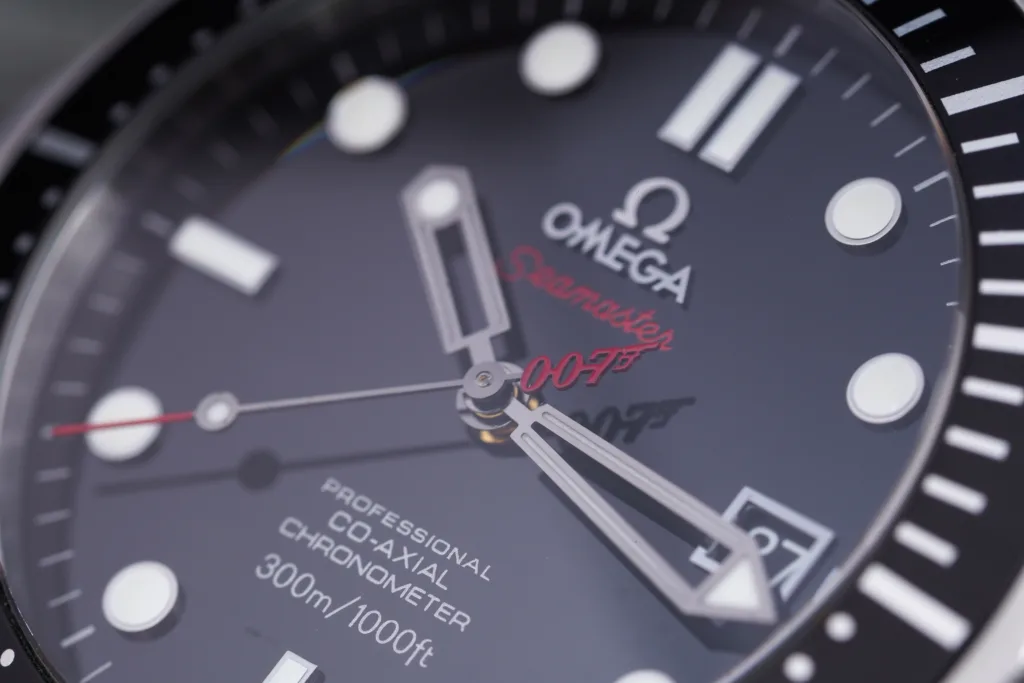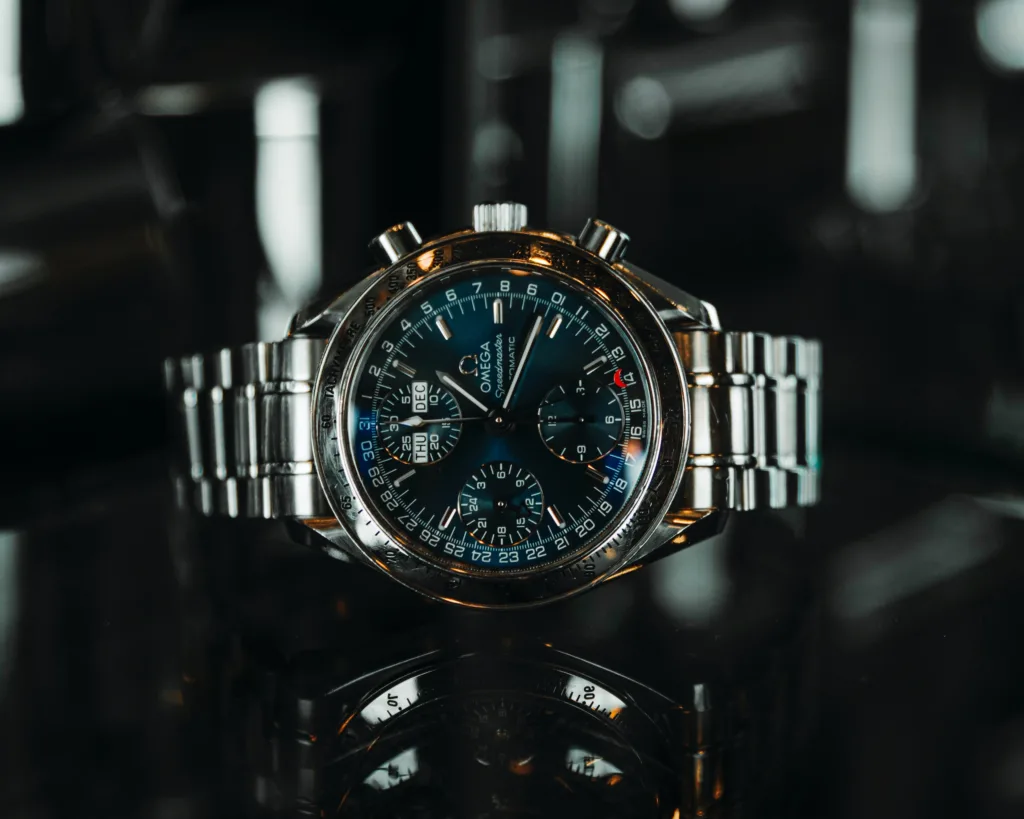Omega, a Swiss luxury watchmaker, has a rich history dating back to 1848. Each Omega watch is unique, not just in its design and craftsmanship, but also in its identity – the serial number. The Omega serial number is a unique code that the company assigns to each watch to mark its authenticity and trace its history. This code is crucial for both collectors and enthusiasts as it provides valuable information about the watch’s production year and model.
The Omega serial number is typically engraved on the watch’s case or movement, and its location may vary depending on the model and production year. For instance, for models produced after 2008, the serial number is often found on the back of the lug on the watch’s 7 o’clock side. However, for vintage models, the serial number might be located inside the watch, requiring the case back to be opened.
The Omega serial number is not just a random set of numbers. It follows a specific system that allows the identification of the production year and model of the watch. For example, the first few numbers often indicate the year of production, while the remaining numbers represent the model reference. However, it’s important to note that Omega has changed its serial number system over the years, so the decoding process may vary for different periods.
Whether you’re a seasoned collector, a new Omega watch owner, or someone considering buying an Omega watch, understanding the Omega serial number is essential. It’s not just about verifying the watch’s authenticity; it’s also about appreciating the watch’s history and lineage. So, the next time you hold an Omega watch, remember that its serial number is a gateway to its past, a testament to Omega’s commitment to quality and craftsmanship, and a tool to ensure its authenticity.
Understanding Omega Serial Numbers
Omega serial numbers are a unique identifier assigned to each Omega watch during its production. They are crucial for verifying the authenticity of the watch and can provide valuable information about the watch’s model, production year, and more.
What is an Omega Serial Number?
An Omega serial number is a unique code that is engraved on the watch during its production. This code serves as a unique identifier for the watch, allowing Omega and watch enthusiasts to verify its authenticity and learn more about its history. The serial number can provide information about the watch’s model, the year it was produced, and sometimes even the specific factory where it was assembled.
Where to Find the Serial Number on Your Omega Watch
The location of the serial number can vary depending on the model and production year of your Omega watch. However, it is typically found engraved on the back of the watch case or on one of the watch lugs. For newer models, the serial number may be located on the side of the watch case or on the bracelet clasp. It’s important to handle your watch carefully when looking for the serial number to avoid any accidental damage.
How to Read an Omega Serial Number
Reading an Omega serial number can provide valuable information about your watch. The serial number typically consists of 6-8 digits. The first few digits often represent the watch model or series, while the remaining digits usually indicate the production year or the specific number of the watch within its production series. However, the exact format and information provided can vary depending on the specific model and production year of your Omega watch.
Remember, if you’re having trouble finding or interpreting your Omega watch’s serial number, our professionals at SWD Watches are always available to help. They can authenticate your watch and even offer a price if you’re interested in selling.
The Purpose of Omega Serial Numbers
Omega serial numbers serve several important functions, from verifying the authenticity of a watch to aiding in theft recovery and facilitating warranty and service procedures.
Authenticity Verification
One of the primary purposes of Omega serial numbers is to verify the authenticity of a watch. Counterfeit watches are a significant issue in the luxury watch market, and serial numbers are one of the key tools used to combat this problem. By checking the serial number against Omega’s records, it’s possible to confirm whether a watch is a genuine Omega product.
Theft Recovery
Omega serial numbers can also be useful in the event of theft. If your Omega watch is stolen and later recovered, the police or insurance company can use the serial number to match the watch to its rightful owner. For this reason, it’s a good idea to keep a record of your watch’s serial number in a safe place.
Warranty and Service Purposes
Finally, Omega uses serial numbers for warranty and service purposes. When you take your watch in for servicing or repairs, Omega can use the serial number to access information about the watch’s model, production year, and service history. This helps to ensure that the watch is serviced correctly and efficiently.
How to Look Up Your Omega Serial Number
Finding and understanding your Omega watch’s serial number can provide valuable information about your timepiece. Here’s a step-by-step guide on how to do it.
Step-by-Step Guide to Looking Up Your Omega Serial Number
- Locate the Serial Number: The serial number is usually engraved on the back of the watch case or on one of the lugs. You may need a magnifying glass to see it clearly.
- Record the Number: Write down the serial number exactly as it appears on the watch. Be careful not to confuse any numbers or letters.
- Contact Omega or a Trusted Watch Dealer: Omega does not currently offer an online serial number lookup service. To get information about your watch from the serial number, you’ll need to contact Omega’s customer service directly or consult a trusted watch dealer like SWD Watches.
What Information You Can Find from an Omega Serial Number Lookup
An Omega serial number lookup can provide a range of information about your watch, including:
- Model: The serial number can help identify the specific model of your Omega watch.
- Production Year: The serial number can often be used to estimate the year your watch was produced.
- Authenticity: As mentioned earlier, the serial number is a key tool for verifying the authenticity of an Omega watch.
7 Ways of Identifying a Genuine Omega Watch
Omega watches are renowned for their precision, craftsmanship, and timeless elegance. However, their popularity also makes them a prime target for counterfeits. This comprehensive guide will help you discern an authentic watch from a fake one utilizing serial numbers and more, ensuring you invest in a genuine piece of luxury. Is your Omega watch real? Learn the 7 ways to spot a genuine Omega watch from a fake.
1. Listening for Sound
The easiest sign of a genuine Omega is that it should never produce any noise. The Swiss design and craftsmanship ensure a silent operation, which is a clear indicator of authenticity.
2. Understanding the Omega Serial Number
Every Omega watch comes with a unique 7 or 8-digit serial number, typically engraved on the back of one of the watch’s lugs. In older models, you might find it inside the case. This number is crucial for verifying the authenticity of your Omega.
3. Recognizing the Omega Logo
The Omega logo is a hallmark of the brand. Counterfeit watches often get the logo wrong – it might appear too thick, bold, or simply painted on rather than engraved or embedded.
4. Checking the Hands
The movement of the hands in an Omega watch is a testament to Swiss craftsmanship. The second hand should move in a sharp, ticking motion without producing any sound. If the second hand ticks or the watch makes a noise, it’s likely a fake.

5. Examining the Dial
The dial is often where counterfeit watches fall short. Look for any spelling errors, incorrect spacing or markings, or details that appear amateurish. Omega is known for its meticulous attention to detail, so any inconsistencies are a red flag.
6. The Lumes: A Bright Indicator
Omega watches, especially the Seamaster, are equipped with luminescent markings. These markings should glow brighter than any fake could replicate. Test the watch’s lumination by placing it under a bright light for around 15 minutes, then examining it in a dark space.
7. Assessing the Functions
Omega watches come with various functions that are hard to replicate in counterfeits. For instance, the helium-escape valve is a unique feature of Omega Seamaster. If this function is missing or doesn’t work correctly, it’s a sign of a counterfeit.

Additional Tips for Authenticating Your Omega Watch
In addition to these key features, there are other subtle details that can help you verify the authenticity of an Omega watch. These include the quality of the bracelet, the engraving of the Omega name and logo, and the movement of the watch.
Remember, if you’re ever in doubt about the authenticity of your Omega, it’s best to seek a professional opinion. Our authenticators have the tools and expertise to confirm whether your watch is a genuine Omega or a counterfeit.
